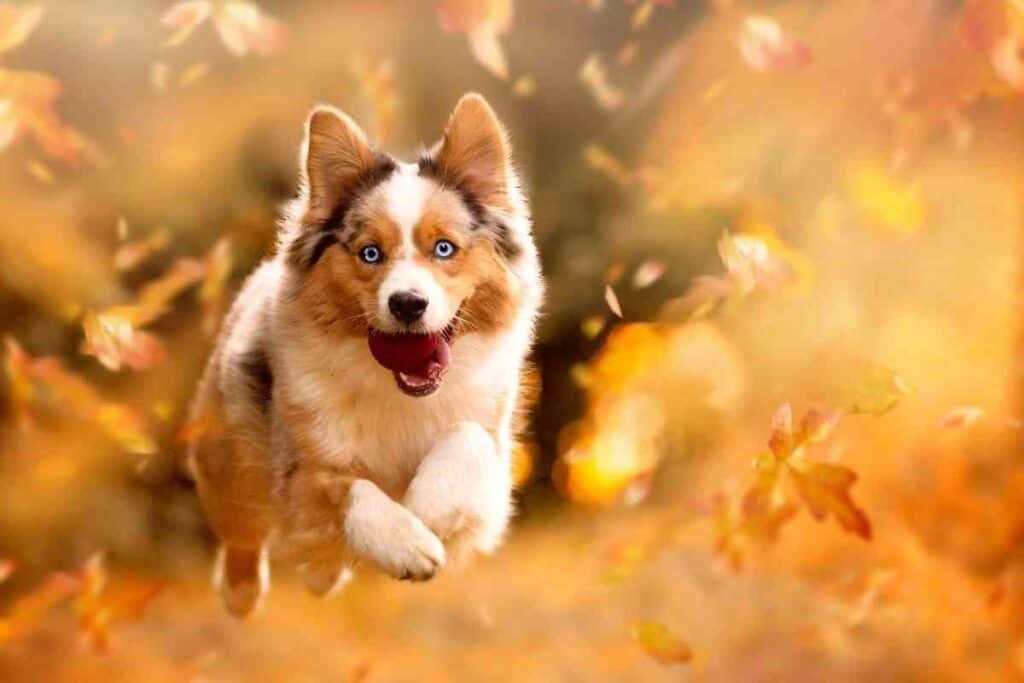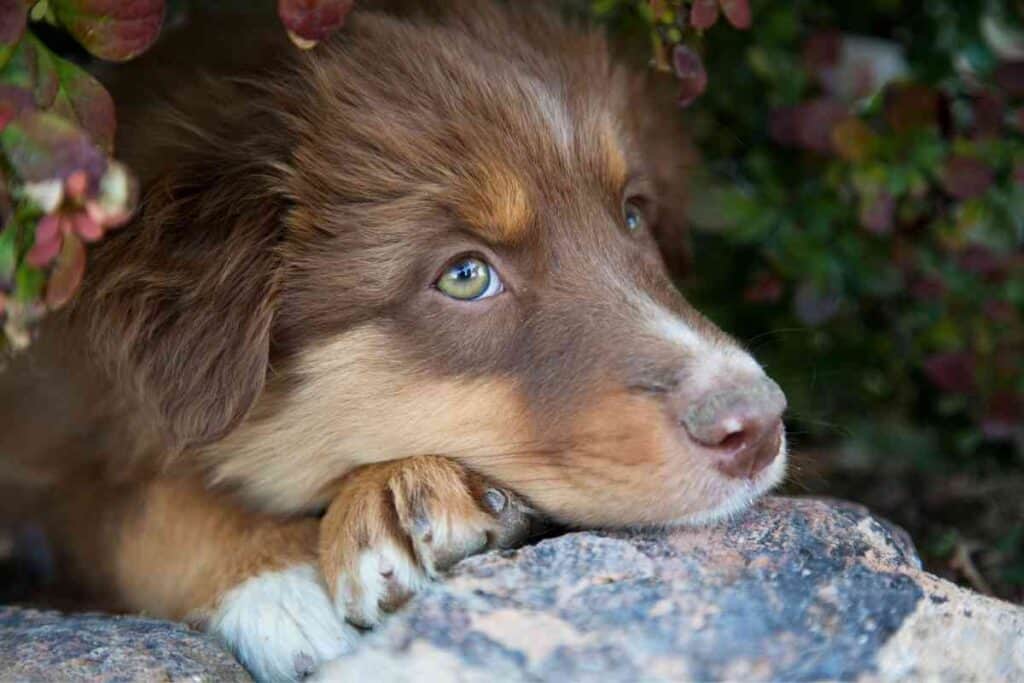Do Australian Shepherds Change Color?
I just adopted an Australian Shepherd and I am scrambling to find out as much information I can about his background. I believe him to be the perfect breed for me as I can often be found working at my house outdoors for long hours.
After a long day yesterday, I decided to take a few minutes’ break from caring for my new puppy to find whatever details I could about his appearance. Most importantly, I wanted to learn about whether or not his coat of fur will change color.
Do Australian Shepherds Change Color?
Yes, some Australian Shepherds do change the color of their fur, but this depends on their breeding and the genetics of their background.
This color change can happen in this chameleon dog breed that is noted in the American Kennel Club as having up to fourteen fur coat color variations in all. Pretty impressive for such a hardworking and intelligent dog breed.

To begin with, this unique breed of dog comes in four distinct colors that the American Kennel Club recognizes. Within those four colors, which are red, black, red merle, and blue merle, some mixes or blends can total up to fourteen distinct variations.
Those who know nothing about the Australian Shepherd dogs and their gorgeous fur coats may not know what “Merle” means. This is very common for this breed.
Merle is a pattern of colors that look like a swirl or marble effect, with lighter and darker colors making up the pattern in either red or blue for this breed.
Black and red color Australian Shepherds will often have fur darkens in coloring as they grow and change throughout their lives.
For the Merle-style fur coat of this breed, the blue and red can have a progressive darkening with them starting their lives as a puppy of a lighter color. The lighter blue will eventually darken to almost black, and red Merles will go from light to dark.
Not all Merle-colored Australian Shepherds will change color and darken, but this is a common theme. If this dog breed spends a lot of time outdoors in the sunshine and has a red Merle color, they can lighten considerably from the sunlight.
When this happens, the Australian Shepherd lightens due to sunlight exposure. This is a short-lived color change that eventually fades away with the changes of the season.
Suppose a potential pet parent is lucky to adopt a Harlequin Australian Shepherd puppy. In that case, they may eventually find that the puppy’s spotted or lacey type fur coat outgrows and ends up having color as time goes by and they grow and change.
Some Australian Shepherds can have rather dramatic color changes, with Merles going from dark to light with complete color changes that are surprising. Australian Shepherds, like some other breeds, do change the color of their fur.
Whatever the color changes occur, some will be obvious, with others being complete and total surprises.
These changes to the color of their fur coat can be surprising to pet parents who are not aware that their dogs’ fur does this. Breeders are aware that this can happen, but they may not always know what dogs it will happen to and the final outcome.
Thanks to their unique genetics, they can have a wide variety of color variations and texture variations.
Texture variations can happen when the design of the coloring changes, meaning more darker fur comes in, or lighter, or the pattern and design itself changes in some regions of the dog’s body.
Finding out that my new Australian Shepherd puppy could change colors was a huge surprise to me! I got completly distracted from ensuring my home was Aussi-friendly and needed to know what my new pooch was going to look like as an adult.
How Do I Know What Color My Australian Shepherd Will Be?
There is a way to get a general idea of what color changes might happen with a specific Australian Shepherd dog by viewing their genetic background, meaning looking at their dog parents and their dog ancestors in photos.

Other puppies that are older which came from the same parents can also give an idea.
Looking at these dogs can give somewhat of an idea but realistically how the coloring will change, and the pattern or design will be as unique as this dog breed itself is. Therefore, it is nearly impossible to develop an exact idea of what each dog will look like.
Breeders may be able to provide an idea of what the pet parent might get, but it is more just for interest and entertainment as what is to be regarding their coloring is to be.
It is by far better for pet parents to use this information and the time they are waiting as a way to have some fun and delight in the enjoyment of having a fur baby that is so unique and special. Like sharing a cake with family and friends that have the gender of the child revealed inside the cake once it is cut, the process and the getting there should be more fun than the actual outcome.
How Can I Select An Australian Shepherd Of A Specific Color?
If you are looking for a particular color Australian Shepherd dog, you should consult the breeder you have selected and discuss this with them first.
While the breeder will not be able to know for sure what each puppy in a litter will end up looking like, as stated above, they will have an idea. Breeders can point the potential pet parents in the right direction to certain dogs that are more likely to have a specific coloring, color change, or even pattern and design.
This can give the pet parent an advantage and a higher chance of getting the color of dog they want.
Do Some Color Australian Shepherds Cost More Than Others?
Yes, the tri-colored pattern that blends, as its name implies, three colors of fur on one dog is one color scheme for the Australian Shepherd that typically costs more than the others.
This coloring creates a very unique and special appearance to the dog’s fur and is highly sought after. This popularity is the reason why this color pattern is more expensive than the others for this breed.
What Is The Rarest Australian Shepherd Color?
The rarest coloring for the Australian Shepherd is the solid red.
Solid coloring for this breed is rare as they typically come with some designs or patterns. Red is a recessive gene that makes the combination of solid and red the rarest.
What Other Solod Colors Are Australian Shepherds?
The other fur coat colors for the Australian Shepherd dogs are yellow and sable colors.
These colors make a beautiful dog, to be sure, but when it comes to breeding standards and American Kennel Club recognition, these two colors are not accepted.
Does Australian Sheppherd Fur Color Affect Behavior Or Health?
The genetics that determine the coloring of the Australian Shepherd can also affect behavior and health, but the color is not the cause of any issues that may arise, it stems from the same genetics.
This topic is still up for debate, and more research is needed in the scientific world regarding fur coloring and behavior or even health for a dog. While research on this topic has been going on for quite some time, there is still much to be discovered.
That being said, it is believed that specific genes that affect the coloring of the Australian Shepherds fur can affect their behavior and health too.
Whether or not this is indeed the case, the knowledge is still out there waiting to be successfully discovered. Until then, parents can come to their own conclusions about their own unique and one-of-a-kind Australian Shepherd dog.
Australian Shepherd Fur Color
Australian Shepherd dogs do have fur that often changes coloring, one way or another. Whether or not every Australian Shepherd will go through this process and how they do it is as unique as the dogs themselves.
Whatever the case, the surprise that this unique trait brings to their pet parents’ life can be exciting or confusing depending on the pet parent.
Either way, changes happen to us all throughout our lives. At least the Australian Shepherd dog keeps it interesting while it’s happening with their lively and hardworking mentality! Who can ask for more from such an all-American dog breed!
